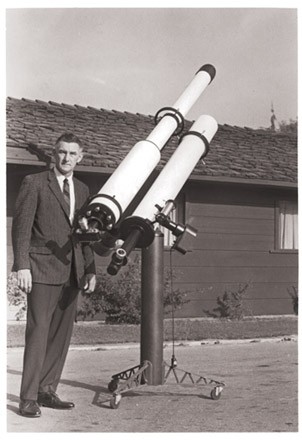Sun-Chaser: Marvin J. Vann, an American Life
Skip other details (including permanent urls, DOI, citation information): This work is protected by copyright and may be linked to without seeking permission. Permission must be received for subsequent distribution in print or electronically. Please contact [email protected] for more information.
For more information, read Michigan Publishing's access and usage policy.
[front matter]
[title page recto]
[title page verso]
The University of Michigan University Library through its Scholarly Publishing Office is committed to providing academic publishing services that are responsive to the needs of both producers and users, that foster a sustainable economic model for academic publishing, and that support institutional control of intellectual assets. The Scholarly Publishing Office seeks to disseminate high-quality, cost-effective scholarly content through both print and electronic publishing. Information about the Scholarly Publishing Office can be found at http://spo.umdl.umich.edu.
Copyright © 2006 by James Wyatt Cook. All rights reserved. No part of this book may be reproduced without permission of the author.
First edition published 2004 (in print only).
Please contact The Scholarly Publishing Office at the University of Michigan University Library for permission information:
2004017531
[dedication and epigraphs]
For Veronica Ransom Vann
Introduction & Acknowledgments
Prevailing American mythology still values what one might call "Revolutionary virtues" a la Ben Franklin: self reliance, amateurism, Yankee shrewdness, the bravery of the citizen soldier, willingness to seek adventure in the wilderness, invention, devotion to family, civic responsibility, the rejection of arbitrary authority and regulation, and shrewd entrepreneurship. In practice nonetheless, Americans increasingly seem to cherish government subsidies, narrow specialization, urbanization, canned entertainment, self-centeredness, serial "relationships," civic indifference, rules and regulations, and a professionalized military.
Occasionally, though, one encounters people who embody in their lives at least some of those older, mythic virtues. Very rarely, one finds a person who seems to display them all. Such a rare person is the subject of this biography, Marvin J. Vann. Marvin proves the premise that true distinction does not reside in fame and celebrity.
I first became interested in Marvin when I saw a display of some of his memorabilia in the library of his undergraduate college. Ms. Jake Weber, who had written the accompanying text, called him "Albion's Indiana Jones," presumably because of Marvin's adventures in South and Central American jungles. Marvin's reality, however, I soon found much more interesting and compelling than Indiana Jones' fictive adventures. I thought Marv's story needed telling and deserved a broader audience than those who chanced upon that library display case. For his is the story of a citizen warrior, an amateur in the finest sense, a devoted husband and father, an inventor, an adventurer in the wilderness, a philanthropist, a homespun ethicist and philosopher, and a self-reliant, shrewd entrepreneur.
Though Marvin insists that this is my book, not his, this work has profited at every turn from his enthusiastic cooperation and that of his spouse of "a short 60 years," Veronica. Despite a painful affliction that restricted his activity, Marvin first allowed me to spend several days interviewing him. On Page xivseeing a first draft of a chapter based on that interview, Marvin decided that I would be more accurate and the process more efficient if he supplemented the interviews by writing up some of his recollections and letting me shape them in this story. Therefore, despite his demurral and excepting infelicities—which are mine alone—this is Marvin's book as well as mine. Beyond that, most of the photographs that illustrate this story are Marvin's. Unless another photo credit is noted, the pictures are his and are used both with his permission and with that of the Albion College Library whose archives now contain his photo collection. Marvin and Ronnie and Barbara and I have grown close in the course of this writing. Barbara and I feel privileged and proud that we have become the Vanns' friends.
Besides the debt of gratitude I owe Marvin and Ronnie, I am also indebted to Jennifer Thomas, the Marilyn Crandell Schleg Archivist and Special Collections Librarian at Albion College. Jenny assisted me by giving me full access to the extensive Marvin J. Vann archive, assembling films for me, and even allowing me to check out certain ordinarily non-circulating materials. I am grateful, too, to Jim Whitehouse who performed necessary introductions and attested to my bona fides, and to Barbara Collier Cook, my spouse of a short 50 years, who helped conduct interviews with Marvin and Ronnie, and who, as always, has cast a critical editorial eye over my prose. I feel grateful, too, to Charlotte Boulay, whose careful reading and welcome suggestions much improved the manuscript. I am also obliged to Professor Keith Snedegar, historian of astronomy and faculty member at Utah Valley State College, who brought to my attention a quite extraordinary list of professional astronomers who attended Albion College as undergraduates. Finally, I want to thank professor of physics John Williams for his photo of the Alvan Clark Telescope, Sarah Briggs for an archival picture of the Albion College Observatory, and Jake Weber for the display that initially caught my eye.
As this work chronicles a kind of modern Odyssey, I follow (very distantly) the example of the great epic original and open Marvin's story in the middle of things, with a boy dreaming, not as in Homer on the island of Ithaca, but in the children's room of a local branch library in Detroit, Michigan, in 1927.
J. W. C. —2004


